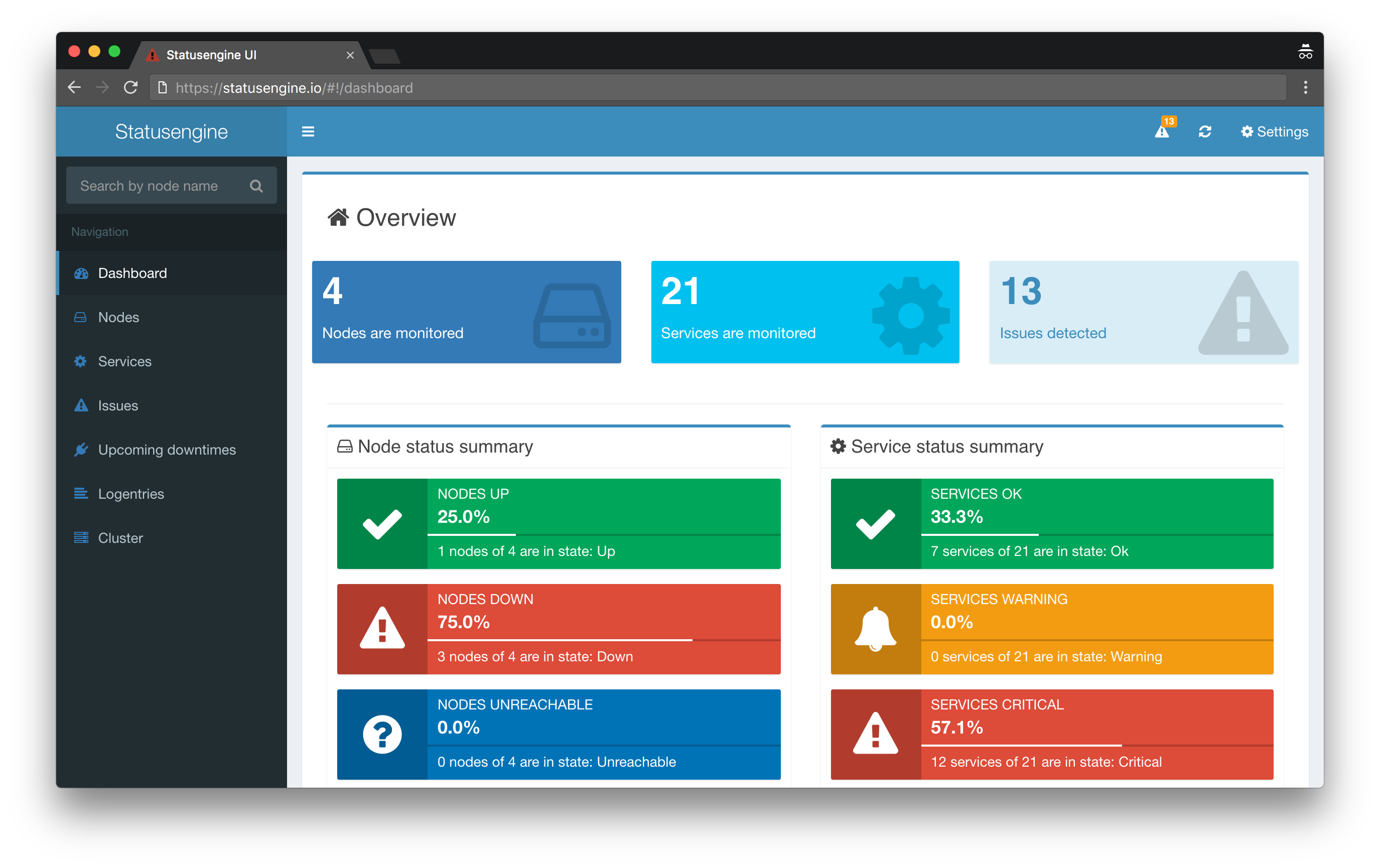Statusengine 3
There is a new sheriff in town to scale your Nagios or Naemon monitoring horizontally

Overview - What is Statusengine?
Statusengine is an extension for Nagios or Naemon and save events such as status results, acknowledgements, notifications and so on to a queueing engine.
A simple process, written in PHP will take all the events from the queue and save them to a database. At the moment Statusengine supports CrateDB, MySQL and Redis as storage backends.
For large setups, you can scale out the CrateDB backend by adding more nodes to the cluster - how simple is this?
But the load average of my monitoring server is way too high! Do you address this issue? Yes. Just install a new monitoring server and split your configuration. Statusengine can handle multiple monitoring nodes and save all results to one database. The only condition is, that the host names are unique across the whole monitoring cluster.
That sounds fair enough to give it a try, but how can i access my data? You can use Statusengine UI to make your data visible. The web interface is based on a JSON API and perfectly fits all sizes of screens like TV's or your Smartphone.
Features
Multiple Statusengine Nodes
Spread the load of your monitoring server or database over multiple nodes. Statusengine has an external command router to pass external commands or passive check results to the corresponding cluster node. How cool is this?
Statusengine UI
Statusengine provide a modern responsive web interface based on AngularJS. An inbuilt refresh method keeps the data up to date, so you can use Statusengine UI on big screens without any Browser Plugins.
Performance Data
Statusengine supports multiple time series databases such as CrateDB, Elasticsearch or Graphite. Statusengine UI can display simple Charts using this metrics. For Dashboards or more complex charts you can use Grafana.
Open Source
Statusengine is 100% open source. Check the GitHub page.
Open documentation
This documentation is open source as well and release under the terms of Attribution-ShareAlike 4.0 International You're welcome to append or fix typos.
No more legacy
Statusengine 3 use a complete new written code base and a new database schema. It is not compatible with Statusengine 2 but I am sure you will love the new schema.
